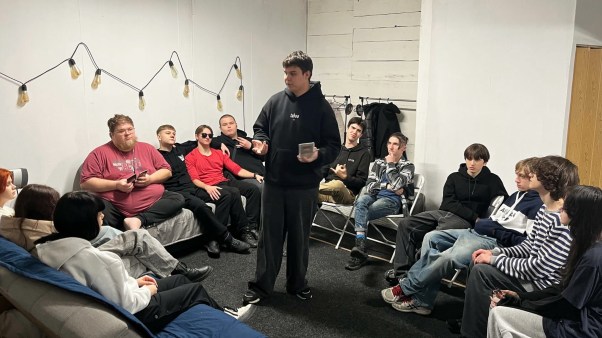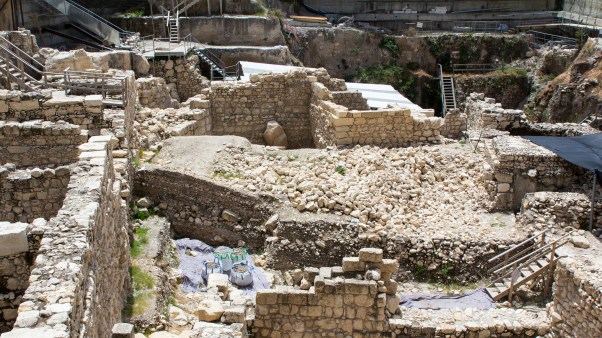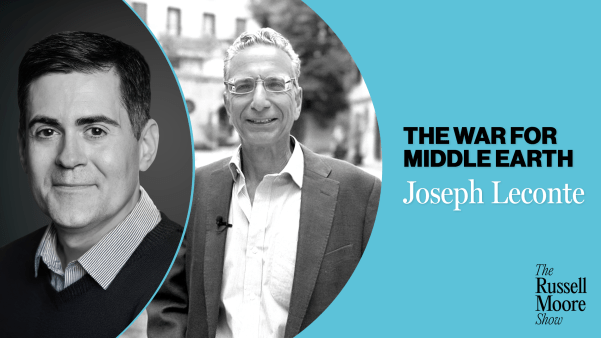We live in an age of wonder when the boundaries of the earth seem to be more porous than ever before. Our reach extends beyond the atmosphere. We speak of earth as the ground we trod but also as a planet, a specific place in the heavens. What does it mean for us to fill the earth when we walk on another planet?
This morning NASA launched a new mission to Mars with a launch period. It has me thinking about our place in the world, our place among the worlds, and our neighbors in space.
The Mars 2020 mission will place a new rover on the surface of Mars by Feb. 18, 2021, if all goes according to plan. This mission takes the next step in searching for life and preparing for human space travel. The car-sized rover, named Perseverance, will resemble Curiosity, the rover that landed on Mars in 2012 and still remains active. It will have a whole new suite of instruments, however, and will land in an exciting new location: near the Jezero Crater, on the edge of Isidis Basin, which contains the remains of an ancient river delta. It will collect and package samples that can be returned to Earth by a future mission.
I believe that God calls us to explore space, to see what God has made, to share our love and wisdom, and to care for creation. But we cannot go alone. We travel with a host of other creatures—the animals, plants, and even bacteria that live with us daily and keep us alive. God calls them as well, and we cannot understand our call until we understand theirs. Questions about the journey, where and when and how we go, involve other species. We cannot go alone, technically or morally. We take others with us. And that requires understanding our interdependence.
Planetary Protection
The exploration of Mars pushes us to the very limits of our technology as we attempt to discover new life, while keeping it separate from Earth life. NASA has detailed protocols for return samples, making sure that alien organisms, no matter how improbable, could not escape to harass us or our environment. NASA has already brought back samples from the Moon (Apollo 11–17, 1969–1972), solar wind (Genesis, 2004) and comet Wild 2 (Stardust, 2006), as have Soviet missions (Luna 16, 20, and 24, 1970–1976). The Japanese Aerospace Exploration Agency (JAXA) returned samples of asteroid Itokawa (Hayabusa, 2016). Both agencies have plans for future missions.
Lisa Pratt, a specialist in extreme biology, has the odd title of planetary protection officer (PPO). She certifies sample-return missions, making sure they meet national and international standards for safety. She ensures that scientists think through the details of contamination, plan properly, and install redundant safety measures. Mars sample return will get extra scrutiny because Mars has a better chance of harboring life than the Moon, comets, or asteroids. The principle remains the same: protect Earth from alien life.
Pratt has another responsibility. She protects Mars from Earth life. What if we “found” life on another planet only to discover we had brought it with us? Or, what if we destroyed the locals before we knew they existed? It would be a horrible lost opportunity. We would lose out scientifically, unable to study a new kind of life. We would lose out relationally, never knowing our neighbor. Space scientists care deeply about Mars and about learning all we can there.
Planetary protection involves protocols for sterilizing spacecraft before they leave Earth. Each of us walks around in a cloud of microbes, countless tiny organisms living around, on, and in us. These symbiotes live by the billions on every surface we touch. Like good neighbors, they rarely bother us. Often, they help us by digesting our food, keeping us healthy, and protecting us from other organisms. But what is good for us may not be good for Mars. Space engineers construct special clean rooms, where air and surfaces have been sterilized. They use heat, chemicals, and radiation to scrub away as much biology as they can while assembling spacecraft. They seal them in shells then launch those shells through the atmosphere to burn away any life that remains.
The PPO does not make these decisions alone. Planetary Protection was first established by the Outer Space Treaty in 1967. An international committee of scientists designs and reviews the policies that Pratt implements.
Even with all this caution, thousands of extreme organisms can survive the process. Adapted to survive decades of drought and famine on Earth, they can harden their surfaces and slow their metabolism, waiting for a warm, damp environment in which to grow. Even these organisms are unlikely to survive the cold, dry, radiation of space. And yet, just to be sure, we keep Earth robots away from Martian locales where liquid water may still flow. Ironically, we cannot search for life in the most promising places, places where we might destroy it.
Most space scientists agree that protecting Mars will become far more difficult, perhaps impossible, with a human mission. Millions of miles of void separate us from Mars. Our ingenuity is starting to bridge the gap, but we cannot neglect the ingenuity of our microbes. Bacteria have colonized Earth from the upper atmosphere to the deep subsurface. It seems inevitable that microbes will accompany us to Mars along with any plants and animals we bring intentionally.
Planetary Expansion
The exploration of Mars pushes us to the edges of our theology as well. It brings us face to face with God’s command in Genesis 1:28 (NRSV): “Be fruitful and multiply, and fill the earth and subdue it.” The first time I read this in the context of space exploration, I thought, “Excellent. Mission accomplished.” Humans have been fruitful and multiplied; we have filled the Earth. We are nearing eight billion people worldwide, 800 times as many as in the time of Jesus, much less Moses or Adam and Eve. Hardly a species has not been changed by our presence. We have domesticated many plants and animals, exiling countless more to nature reserves. We have changed the chemistry of sea and air so much that creatures in the farthest, deepest, widest wild have had to change their way of life. Truly, we cover the face of the Earth. Truly we have subdued it.
And then, a thought occurred to me. Are earth and Earth really the same? For most of Christian history, earth referred to the dirt below our feet, the land we inhabit, and the extent of humanity. It did not become a planet until the 16th century, when Copernicus named it one of the wandering stars. Earth became a proper noun. Which earth was God talking about? Shall we fill the heavens, with dominion over every rock in space, every patch of dirt? Or have we already achieved our goal?
On the fifth day, God made the creatures of sea and sky. God commanded them, saying, “Be fruitful and multiply and fill the waters in the seas, and let birds multiply on the earth.” (Gen. 1:22) Is our earth their earth? Perhaps they were meant to fill the waters above as well as the waters below. The two commands come only six verses apart. Should they not be interpreted the same way? Job reminds us that God has plans for many species; and not all of them relate to humanity.
Neighbors in Space
For me, space ethics is love of neighbor writ large. It seems abstract, though it becomes more concrete as we explore the solar system. It also provides context for decisions we make daily about other species on Earth. They are not just scenery, but fellow actors—if not equals then wards. The stage is surprisingly small, and the parts intertwine.
Some have argued that we should stay home for precisely this reason. In “Religion and Rocketry,” C. S. Lewis argued against space travel. We know we are fallen; why would we bring our fallenness to the stars? More recently, Christian and secular ethicists alike have urged us to wait, asking us to put our own house in order before heading out. Margaret McLean emphasizes our ecological responsibilities here on earth, while Lucianne Walkowicz highlights social responsibilities. De Witt Douglas Kilgore and Gabrielle Cornish explore the ways that nationalism, colonialism, and race shape our hopes for life in space. I share their caution, but I also have hope for the journey.
I believe in self-reflection and contemplation and changing myself before trying to change others. But I also know that I cannot make the change on my own. I need to help others, and I need others to help me. This applies to me personally, to my family, my nation, and even to the planet Earth. God calls us to seek and serve the other, even the alien other. And God calls us not just as individuals, but as members of a larger body. So, I think there is something to be said for space travel. Our wanderlust must be balanced by stewardship, but it will never go away. There is a “come and see” beyond our atmosphere, and we will not know what we went out to see until we see it. It may be alien life. It may only be a new appreciation for the life we bring with us.
Travelling Companions
Space science provides insights here as well. Since the Apollo missions, NASA has researched environmental control and life support systems—creating bubbles of Earth life beyond the Earth. On long-term missions, such as a human mission to Mars, it is impossible to imagine bringing enough food, air, and water for the journey. It would have too much mass to launch into space. It would take up too much volume in the spacecraft. That means we need to bring other organisms with us: bacteria, plants, and animals. Abiological systems have proven less efficient at recycling waste and maintaining the environment. Early work focused on plants like yams and lotus flowers to clean the air and water as well as provide calories for astronauts. Later researchers began to consider the role of insects and fish. More recently, we have learned to appreciate the efficiency and flexibility of bacteria. In addition to caring for our bodily symbionts, we can grow colonies that turn carbon dioxide and waste into clean air, clean water, and edible food.
Every pilgrimage reveals something about home. Thinking about systems in space helps us understand similar systems on Earth, how we depend on other species, and how they depend on us. It shows us that we are part of a larger whole and that God has a plan for all of it. Space travel reminds us of God’s care for the lily and the sparrow. It brings us face to face with a plan for salvation that does not end at humanity. Our final destination will be reached in community, one species among many amid worlds without end.
Lucas Mix studies the intersection of biology, philosophy, and theology. A writer, speaker, professor, and Episcopalian priest, he has affiliations at Harvard, the Ronin Institute, and the Society of Ordained Scientists. He is currently project coordinator at Equipping Christian Leadership in an Age of Science, supporting churches and Christian leaders using the best of science and theology. He blogs on faith, science, and popular culture.









